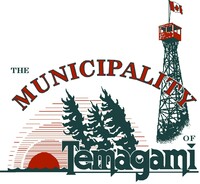Temagami Fire Tower Trail: Point Two - Description of Forest Type.
Click on the link below to watch video:
Temagami Fire Tower Trail - Point Two - Firetower Trail Forest Type
Boozhoo!
You’re at Point 2: Description of Forest Type.
Here in White Bear Forest, you encounter a mixed forest of old-growth and regenerating stands. Let’s explore what defines this ecosystem. This region’s forest is characterized by a mix of coniferous and deciduous species adapted to the rocky Canadian Shield terrain. You will see towering white pine, red pine, eastern hemlock, and cedar remnants of old-growth, alongside younger birch, aspen, and poplar in regrowth areas.
The canopy structure varies: open stands where historic logging occurred mixed with denser pockets preserved initially by inaccessibility and eventually by conservation efforts. Soil is often shallow over bedrock, with pockets of deeper organic layers supporting understory plants.
In Anishinaabemowin, the language of the Tema Augama Aanisnaabe, tree is ‘mitig’ (mih-tig); each species has names and traditional cultural uses and we will attempt to teach you many of the names and words from a language which has been spoken here from time immemorial.
This forest type reflects adaptations to the Shield’s thin soils, variable moisture, and fire regimes. After natural or human-caused fires, pioneer species like aspen and birch colonize; over decades, shade-tolerant species return. Forest management today integrates some knowledge of these successional patterns. Wildlife depends on structural diversity: open areas for moose forage, dense cover and cavities in old snags provide shelter for a variety of small mammals and nesting birds. Seasonal changes bring shifts: spring ephemerals take early light; summer canopy shields ground from heat; fall colours emerge in deciduous stands.
Look around: note variations in bark texture, needle clusters, leaf shapes—each signals a species and its ecological role.” If you visit in spring, watch for trilliums at the forest floor; in summer, listen for cicadas and woodpeckers; in fall, enjoy maples’ reds and golds.
Note any seasonal trail conditions (mud after rains, slippery leaves) and plan accordingly.
Miigwech.
Scan next for Point 3: Tower Steps & Fire Tower History.
Onward!
